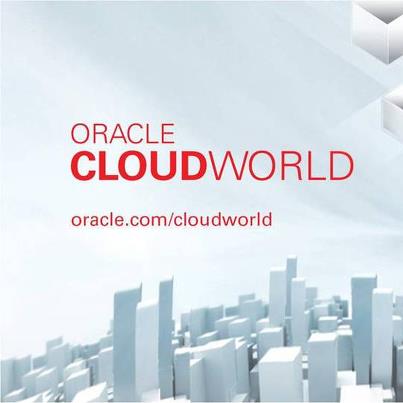Bridging The Digital Divide
“Digital inclusion brings about a level playing field. It means that the little girl in a village in Nigeria can get information for her research project as a little girl in Washington or China.”-
Professor Turner Isoun.
Former Minister of Science and Technology
The term digital divide according to Wikipedia refers to the gap between people with effective access to digital and information technology and those with very limited or no access at all. It includes the imbalances in physical access to technology as well as the imbalances in resources and skills needed to effectively participate as a digital citizen.
In other words, it is the unequal access by some members of society to information and communication technology, and the unequal acquisition of related skills. The term is closely related to the knowledge divide as the lack of technology causes lack of useful information and knowledge.
Digital divide is currently referred to as gaps in the ownership of, or regular access to a computer. As internet came to be seen as a central aspect of computing, the usage of the term shifted to encompass gaps in not just computers but also access to the internet.
The world is undergoing an Information Communications Technology (ICT) revolution, a revolution that has enormous social and economic implications for the developed and less developed countries of the world. A gigantic gulf already exists between the industrialised and developing countries in terms of access to ICTs (this includes radio, computers, TV and mobile phones).
The criteria often used to assess the imbalance between the ‘haves’ and the ‘have nots’ of the digital divide tend to focus on access to hardware and to the Internet, but the nature of the digital divide is both contextual and debatable. Widespread poverty across the developing world has a complex and multiple reasons; lack of access to information that is essential to the lives of the poor is one such reason. Poor access to education and knowledge is another; this is particularly acute for girls and women.
Lisa Servon argued in 2002 that the digital divide “is a symptom of a larger and more complex problem – the problem of persistent poverty and inequality”. As described by Mehra (2004), the four major components that contribute to the digital divide are “socioeconomic status, with income, educational level, and race among other factors associated with technological attainment”.
In today’s society, jobs and education are directly related to the Internet, in that the advantages that come from the Internet are so significant that neglecting them would leave a company vulnerable in a changing market.“Andy Grove, the former chair of Intel, said that by the mid-2000s all companies will be Internet companies, or they won’t be companies at all.”
In countries where the Internet and other technologies are not accessible, education is suffering, and uneducated people and societies that are not benefiting from the information age, cannot compete in the global economy.
This leads to developing countries, suffering greater economic downfall and richer countries advancing their education and economy. However, when dealing with the global aspect of digital divide there are several factors that lead to digital divide. For example, country of residence, ethnicity, gender, age, educational attainment, and income levels are all factors of the global aspects of digital divide.
Recognition of digital divide as an immense problem has led Governments, scholars, policy makers, and the public to understand the “potential of the Internet to improve everyday life for those on the margins of society and to achieve greater social equity and empowerment”.
According to the World Summit on Information Society (WSIS), one of the key principle for building an inclusive information society thereby bridging the digital divide and ensuring harmonious fair and equitable development for all requires an improved access to information and communication infrastructure and technology as well as to information and knowledge; building capacity; increased confidence and security in the use of ICTs; create an enabling environment at all levels; develop and widen ICT applications; foster and respect cultural diversity; recognise the role of the media, address the ethical dimension of the information society; and encourage international and regional cooperation.
Kofi Anan, former Secretary-General of the United Nations, defined the information society as that through which “human capacity is expanded, build up, nourished and liberated, by giving people access to the tools and technologies they need, with the education and training to use them effectively.”This is the kind of society that the WSIS set about to create.
Multiple initiatives have been, and continue to be, implemented across the world to address the major obstacles to bridging the digital divide.
For example, many developing countries have poor communications infrastructure, which prevents connectivity, particularly in rural areas. The issue of infrastructure is a major issue as this requires global, long-term investment, and support from a variety of sources including governments, private sector, multilateral institutions (United Nations), financial institutions (World Bank) and the civil sector (NGOs). There are a number of global initiatives, such as the UN ICT Task Force and G8 Digital Opportunity Task Force (DOT Force), that are working to address these vital areas.
To begin overcoming digital divide in Nigeria, The Federal Ministry of Science and Technology (FMST) and National Information Technology Development Agency (NITDA) collaborated with the Intel World Ahead Programme and Microsoft to develop the Computers for All Nigerians Initiative (CANI). CANI is a comprehensive programme to enhance economic and social opportunity by improving access to affordable, high quality PCs and the internet, the digital inclusion programme is helping tens of thousands of Nigerians purchase their first PC.
Nigerian Companies like Zenox, Omatek, Beta and Brian PCs are among the ones that were made available to employees of participating public and private sector organisations at affordable prices and at a two- year low interest loan.
Another initiative by NITDA in bridging the digital divide is the internet penetration to rural and underdeveloped areas- the Rural Information Technology Centres (RITCs). This project started in 2007 with ten (10) centres, and by 2009, there are 40 centres scattered all over the country. These centres are equipped with computers that have e-learning facilities where beneficiaries can take courses on Microsoft Office, Oracle, Cisco, Hewlett Packard etc. Echoing the statement made in Ethics in the Internet, “The Internet can make an enormously valuable contribution to human life. It can foster prosperity and peace, intellectual and aesthetic growth, mutual understanding among peoples and nations on a global scale.”
To participate actively in and benefit fully from the information society and the knowledge economy, each person should have the necessary skills and knowledge in order to understand and participate. In this regards, Capacity building on Information Technology know – how was also carried out by NITDA, where 6100 graduate were trained in IT related fields. One thousand graduates from each of the six geo-political zones and one hundred from the Federal Capital Territory.
Now that the Internet is becoming an increasingly vital tool in our information society. The Nation is rapidly going on line, with an ever higher share of Nigerians regularly using computers and the internet in their daily lives.
More Nigerians are going online to conduct such day-to-day activities as education, business transactions, personal correspondence, research and information-gathering, and job searches. Each year, being digitally connected becomes ever more critical to economic and educational advancement and community participation.
Now that a large number of Nigerians regularly use the Internet to conduct daily activities, people who lack access to these tools are at a growing disadvantage. Therefore, raising the level of digital inclusion by increasing the number of Nigerians using the technology tools of the digital age is a vitally important national goal.
For Nigeria and her people to compete globally and participate meaningfully in the information age, the Federal Government implemented some socio-economic development programmes which require the development of information and knowledge based Nigerian economy. Some of these socio-economic development programmes and initiatives are National Economic Empowerment Development Strategy(NEEDS), State Economic Empowerment Strategy(SEEDS), Millennium Development Goals(MDGs), National Poverty Eradication Programme( NAPEP), and World summit on Information Society (WSIS) Plan of Action.
On the other hand, NITDA will continue to work vigorously to better maintain, understand and promote goal of full digital inclusion for all Nigerians thereby achieving President Yarádua’s 7 point Agenda and placing the country among the top 20 economies of the world come year 2020.





